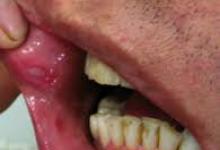EULAR Treat-to-Target Guidelines for Gout Save

Treat-to-target (T2T) works when they are pragmatic and conform well to daily practice.
Gout is an ideal therapeutic area where T2T could be and should be applied.
EULAR has published the consensus recommendations of 11 rheumatologists, a cardiologist, nephrologist, general practitioner and patient. Their recommendations were based on a for the systematic literature review to establish levels of agreement on key issues.
There were no head to head trials that studed at T2T approach. Thus, indirect evidence and expert opinion formulated the bulk of recommendations. Overall, there were four overarching principles and nine T2T recommendations.
Primary amongst these was the focus on the dissolution of crystals and prevention of flares. Also highlighted were patient education, adherence to medications and monitoring of serum urate levels.
Overarching Principles
- Gout as a chronic and serious disease that can be treated effectively.
- The importance of reducing and maintaining serum urate below a defined target.
- The requirement for patient education about all aspects of the disease and for shared decision-making with the patient.
- The need for long-term adherence to urate-lowering therapy.
Recommendations
- Both providers and patients should be educated about the disease and its treatment.
- Patients and healthcare providers should make treatment decisions together.
- The primary treatment approach is to reduce and maintain serum urate at a level sufficient to effect dissolution of MSU crystals.
- Modifying lifestyle and monitoring renal function are important.
The expert panel also layed out an aggressive research agenda of yet to be answered questions in gout management:
Research Agenda
- What is the optimal target serum urate level to manage gout?
- Is the current recommended target serum urate level a valid endpoint?
- How often should the serum urate level be measured to optimally control disease?
- How does frequency of serum urate measurement impact on the management of patients with gout?
- Are very low serum urate levels dangerous (such as by causing neuropsychiatric disease, eg, dementia)?
- What are the consequences of lowering serum urate levels?
- Is it possible to develop a composite disease activity measure that might serve as a better target for management of gout disease activity in clinical practice? (
- Does an elevated serum urate level cause chronic kidney disease?
- How often should renal function be measured?
- What is the optimal management of gout in patients with multiple comorbidities?
- Is there any diagnostic utility to aspirating joints in patients with intercritical gout?
- Should monitoring by ultrasound or CT be used in gout?
- How is the treatment of both acute and chronic manifestations of gout best integrated into a T2T strategy?
- What is the optimal timing of initiating treatment for acute gout attacks?
- What is the optimal strategy to eliminate tophi? T
- Should urate lowering therapy be initiated after the first gout attack?
- Is there any effect of treating asymptomatic hyperuricaemia?
- What is the role of surgery in the treatment of tophi?
- Does a T2T approach improve the adherence of patients to their treatment?










If you are a health practitioner, you may Login/Register to comment.
Due to the nature of these comment forums, only health practitioners are allowed to comment at this time.